What is it about resistance exercise that triggers muscle growth? What we and others have found in the lab is that resistance training stimulates the release of several hormones and chemicals that signal trained muscles to grow.
One of the major hormones released in response to training is growth hormone. Its effects on growth appear to be essential. For example, a study by McCall and colleagues showed that resistance training could induce immediate increases in GH and that there was a correlation between increases in GH and muscle growth.1 That means individuals who released more GH grew the most, and the nail was hammered home when scientists found that blocking GH release following exercise eliminated muscular growth adaptations.2 So it’s critical that bodybuilders understand how growth hormone works and, most important, how they can manipulate their training to maximize its release following exercise.
The cell nucleus is responsible for regulating the size of a muscle cell. The number of nuclei in the cell is regulated by satellite cells—cells that surround a muscle fiber. When a muscle fiber is damaged, the satellite cells divide and fuse to the muscle fiber. As they fuse, they donate their nuclei to the fiber. If satellite cells aren’t allowed to divide and fuse to a muscle fiber, growth stops.
GH stimulates an increase in satellite cells and the actual binding of satellite cells to muscle fibers. That occurs indirectly through GH’s ability to increase insulinlike growth factor 1 release from the liver.3 IGF-1 that directly stimulates protein synthesis, or the building of proteins, and also activates satellite cells.4,5
Acute Training Variables Affect Growth Hormone
By now there’s only one thing you’re interested in knowing: How do you optimize growth hormone release? A virtually endless combination of variables can be manipulated to change the GH response to exercise. We can narrow them down, however, to five immediate ones: exercise intensity, rest periods, volume, exercise choice and exercise order.
1) Exercise intensity. Exercise intensity is expressed as a percentage of a one-repetition maximum. For example, if you can bench-press 200 pounds for a single, then benching 200 pounds would represent 100 percent intensity, while lifting 160 pounds would represent 80 percent intensity. A threshold intensity is required to stimulate an acute GH release following exercise.6 To see what that threshold was, researchers studied the effects of lifting at 60 percent, 70 percent and 85 percent of individuals’ 1RM for a total of three sets on each of 12 different exercises.7 They found that 60 percent wasn’t enough to stimulate GH but that stimulation increased in a dose-dependent manner at 70 to 85 percent of the one-rep max.
What happens when you compare moderately high-intensity exercise—70 to 85 percent of 1RM—to maximum-intensity exercise? Scientists compared 10 sets of 10 RM squats to 20 sets at 1RM intensity.8 It was found that the 100 percent intensity increased GH by 450 percent, while the moderately high intensity produced a 200-fold increase. What was really interesting was that the increase in GH paralleled a greater increase in lactic acid production.
That study lays the basis for the lactate-concentration hypothesis, which suggests that an exercise protocol stimulates the secretion of GH proportionate to the amount of lactate it produces. Lactic acid is responsible for the burn you get during weight training, and it’s maximally released during higher-repetition sets, such as within an eight-to-12-rep range.
Now, as loyal IM readers know, under special conditions you can stimulate growth hormone release at very low intensities by means of blood occlusion training, which was discussed in the April ’08 IRON MAN by yours truly and our colleague Layne Norton.9 If you haven’t read that, we urge you to do so.
2) Rest periods. Rest periods have a tremendous effect on growth hormone release. Studies have compared 5RM sets to 10RM sets with either one- or three-minute rest periods between sets.10 Which do you think produced the greatest GH response? Lactic acid builds up in the muscle and blood, but with shorter rest periods the body has less time to clear the lactic acid, which means lactic acid buildup is greatest following 10-repetition-maximum sets compared to five-rep maxes, and greatest with only one-minute rest periods compared to three-minute rest periods. GH is also highest after 10-repetition-maximum sets done with only one-minute rest periods.
So moderately high-intensity exercise with shorter rest periods produces the greatest GH response to exercise.
3) Volume. Volume is determined by the number of sets and repetitions and the amount of weight lifted in a given training session. High-intensity bodybuilding, in which individuals perform one set vs. multiple sets of an exercise, has always been controversial. The question is, What delivers the greatest GH response? To investigate that question, Gotshalk, et al., studied the effects of a single-set vs. a three-set workout on blood GH.11 GH increased to a greater extent with the three-set workout. In a similar study scientists compared a group of individuals who performed eight exercises at one set per exercise to a group that performed eight exercises at three sets apiece.12 The higher volume elicited a far greater GH response than the lower-volume session. Studies have found increases in GH from one to three sets and from eight to 24 sets. That suggests that, when intensity is held constant, volume may increase GH in a dose-dependent manner. However, more studies are needed to see how far-reaching the relationship is.
4) Exercise choice. This variable is related to compound vs. isolation exercises, as well as the size of the muscle groups being trained. A recent review on GH suggested that GH is released to a greater extent with compound exercises and with exercises that involve larger rather than smaller muscle groups.13 Compound exercises involve movements at more than one joint. For example, a bench press, which involves movement at the elbow and shoulder joints, would have a greater effect than the dumbbell flye at stimulating a GH response. The squat, which involves larger muscle groups like the gluteals, quadriceps and hamstrings, would elicit a greater GH response than the bench press, which mainly stimulates the chest and triceps.
5) Exercise order. Performing larger-muscle-group exercises first may elicit a more anabolic response for the remainder of a training session. Evidence suggests that GH peaks 25 minutes after high-intensity exercise. That carries several practical implications. For example, typically after a leg workout athletes leave the weight room; however, if an athlete is prioritizing a smaller bodypart, he or she may benefit by training it after the main workout to promote GH-enriched blood flow to it. So throwing in a few sets of biceps curls after squats, for example, could make your arms grow faster.
That also has implications in full-body workouts—it would suggest that larger muscle groups should be trained before smaller to facilitate a more anabolic hormone environment for the duration of the session. While the theory seems logical, it has yet to be tested.
Practical Applications
Bodybuilders slave in the gym for hours on end to maximally stimulate muscle growth. Hypertrophy appears to be triggered by an increase in hormones and other growth factors following exercise. The most effective way to train for GH release is eight to 12 repetitions, with one-minute rests between sets and multiple sets. The threshold is unknown, but GH appears to increase proportionately with volume up to at least 24 sets. Evidence indicates that compound exercises produce a greater GH response than isolation work, meaning that those of you avoiding the squat need to reevaluate your priorities.
Editor’s note: Gabriel Wilson is completing his doctorate in nutrition with an emphasis on optimal protein requirements for muscle growth, and is a researcher in the Division of Nutritional Sciences, University of Illinois, Urbana. Gabriel is also vice president of the Web site ABCBodybuilding.com. Jacob Wilson is a skeletal-muscle physiologist and researcher in the Department of Nutrition, Food, and Exercise Science, Florida State University, Tallahassee. He is president of the Web site ABCBodybuilding.com.
References
1 McCall, G.E., et al. (1999). Acute and chronic hormonal responses to resistance training designed to promote muscle hypertrophy. Can J Appl Physiol. 24(1):96-107.
2 Palmer, R.M., et al. (1994). Effects of a polyclonal antiserum to rat growth hormone on circulating insulin-like growth factor (IGF)-I and IGF-binding protein concentrations and the growth of muscle and bone. J Endocrinol. 142(1):85-91.
3 Crist, D.M., et al. (1991). Supplemental growth hormone alters body composition, muscle protein metabolism and serum lipids in fit adults: Characterization of dose-dependent and response-recovery effects. Mech Ageing Dev. 58(2-3):191-205.
4 Coolican, S.A., et al. (1997). The mitogenic and myogenic actions of insulinlike growth factors utilize distinct signaling pathways. J Biol Chem. 272(10):6653-6662.
5 Florini, J.R., et al. (1996). Growth hormone and the insulinlike growth factor system in myogenesis. Endocr Rev. 17(5):481-517.
6 Felsing, N.E., et al. (1992). Effect of low- and high-intensity exercise on circulating growth hormone in men. J Clin Endocrinol Metab. 75(1):157-162.
7 Pyka, G., et al. (1992). Age-dependent effect of resistance exercise on growth hormone secretion in people. J Clin Endocrinol Metab. 75(2):404-407.
8 Hakkinen, K., and Pakarinen, A. (1993). Acute hormonal responses to two different fatiguing heavy-resistance protocols in male athletes. J Appl Physiol. 74(2):882-887.
9 Norton, L., Wilson, G., and Wilson, J. (2008). Occlusion training: The new frontier in muscle growth. IRON MAN. 67(4):102.
10 Kraemer, W.J., et al. (1990). Hormonal and growth-factor responses to heavy resistance exercise protocols. J Appl Physiol. 69(4):1442-1450.
11 Gotshalk, L.A., et al. (1997). Hormonal responses of multiset versus single-set heavy-resistance exercise protocols. Can J Appl Physiol. 22(3):244-255.
12 Fleck, S.J., et al. (1996). Influence of resistance exercise volume on serum growth hormone and cortisol concentrations in women. J Strength Cond Res. 10:256–262.
13 Fleck, S.J., and Kraemer, W.J. (2003). Designing resistance training programs (3rd ed.). Colorado Springs: Human Kinetics Publishers. IM













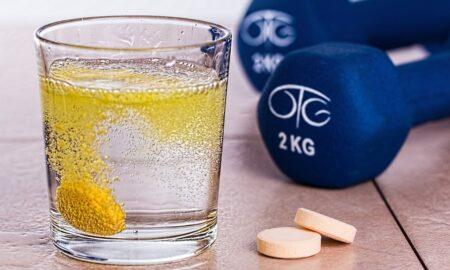

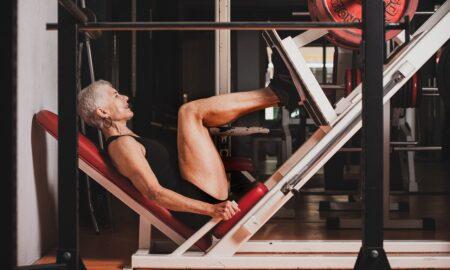
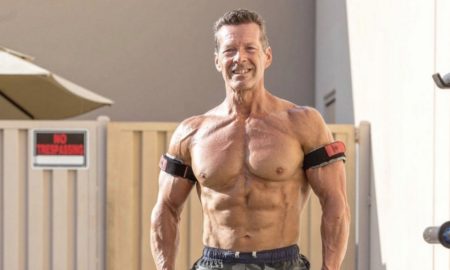
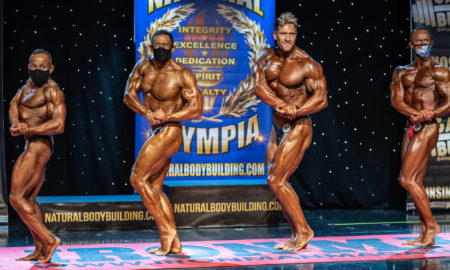
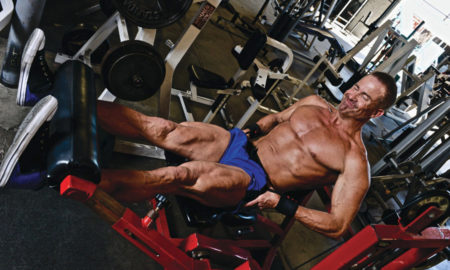
You must be logged in to post a comment Login